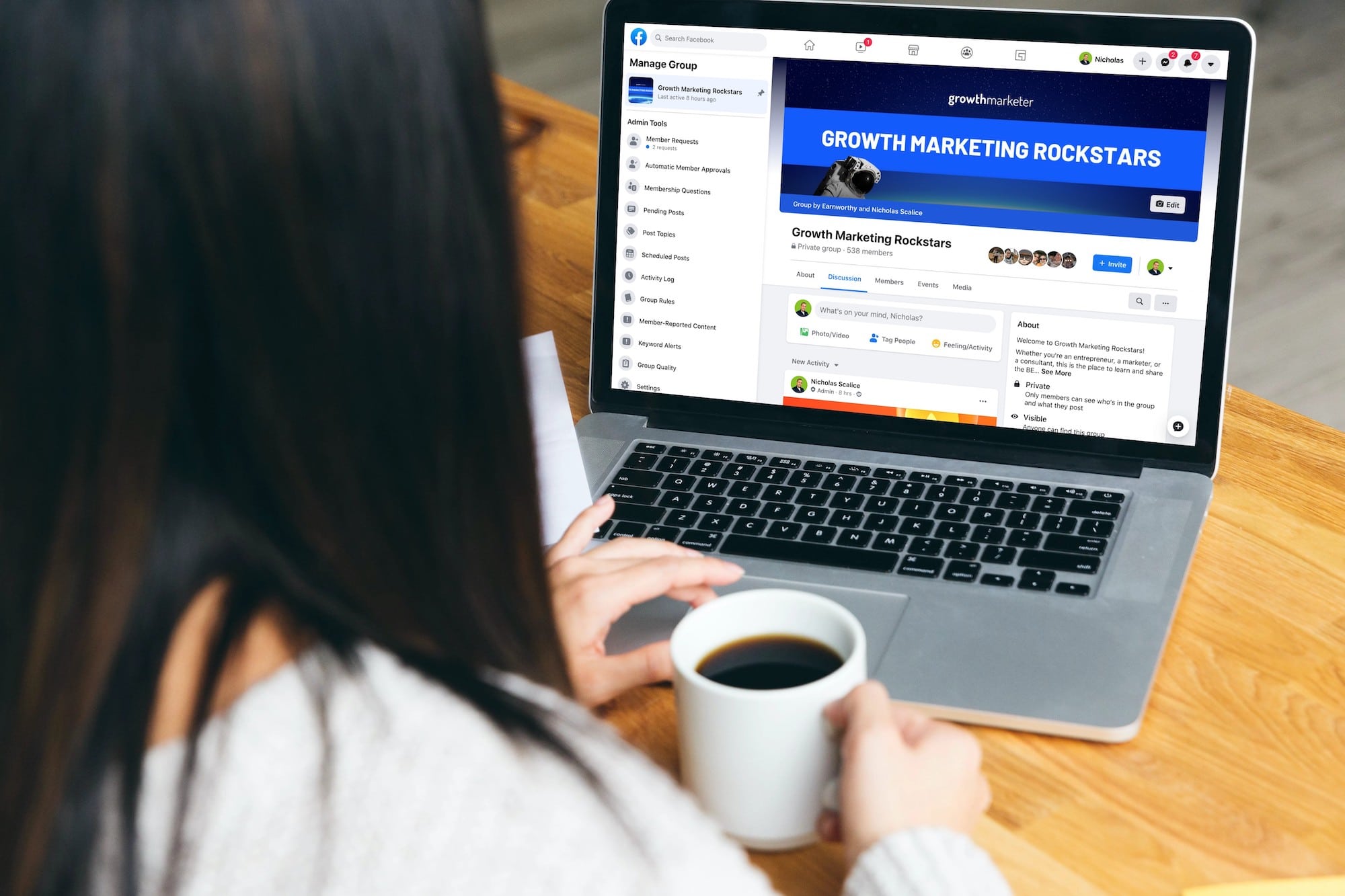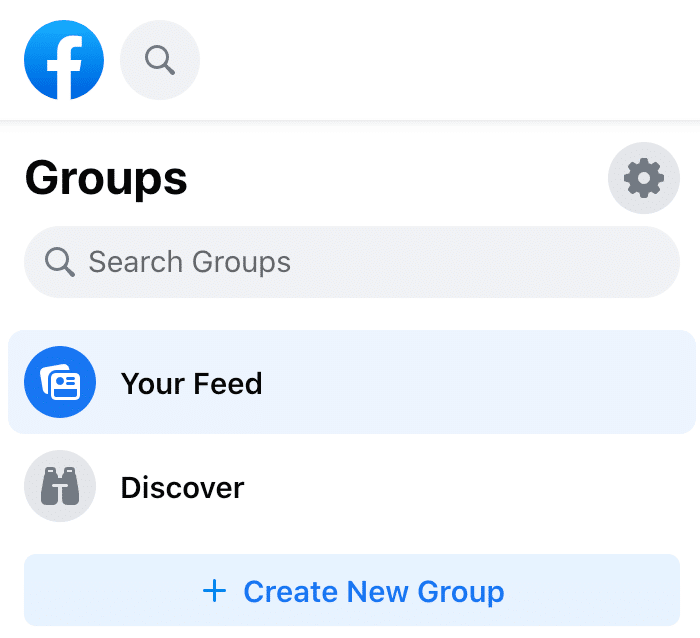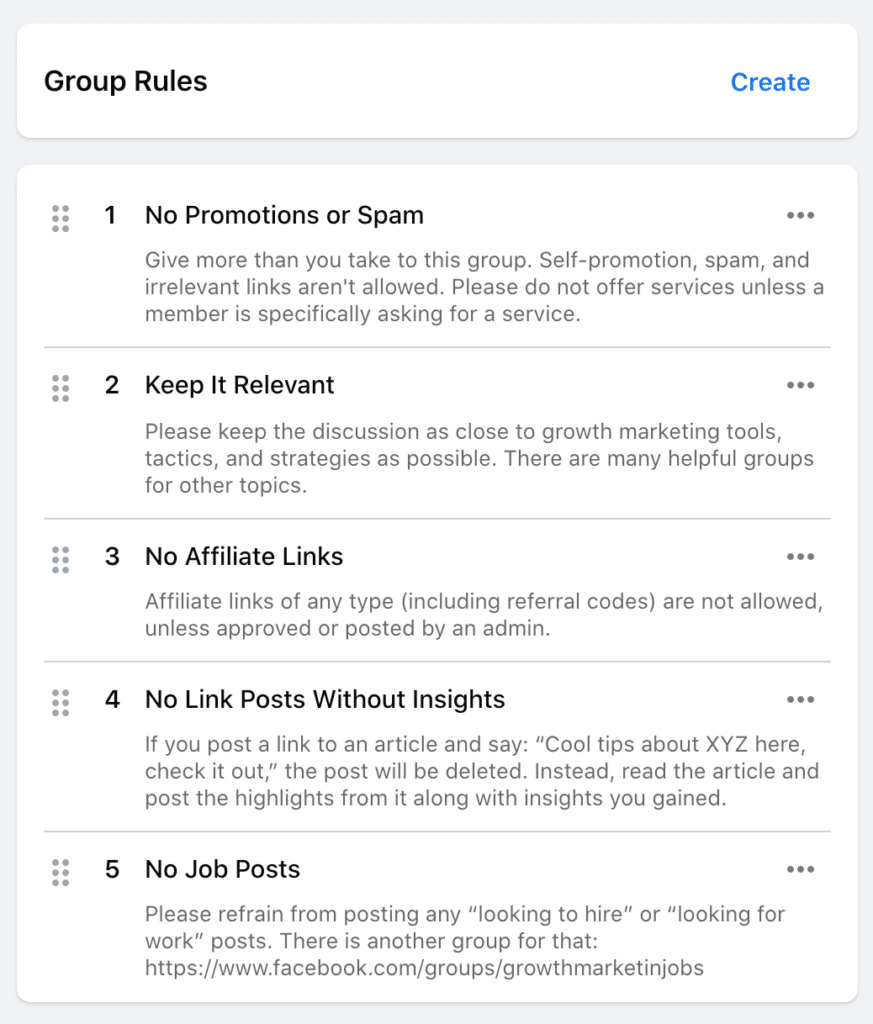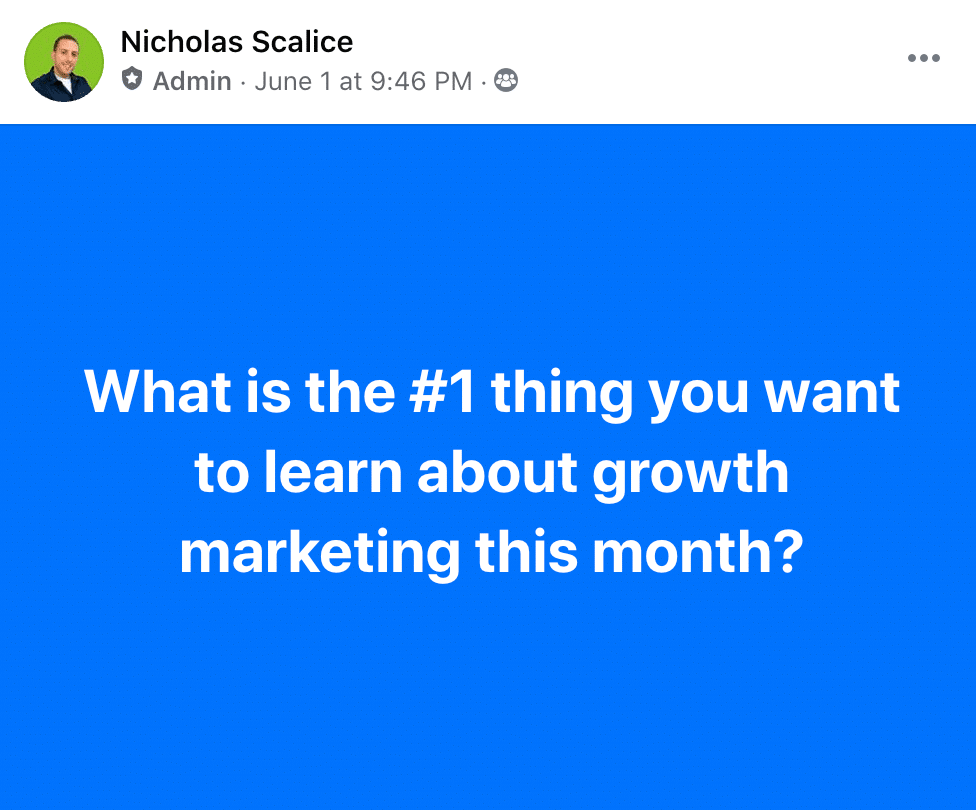Facebook Groups are very popular right now. Today, more than 400 million people on Facebook belong to a group that they find meaningful. And if you’re not leveraging that popularity to create your own community, you may be missing out on one of the biggest growth marketing opportunities of recent years.
For instance, did you know that Facebook has flat out said that groups are pretty much the future of the platform? Well, sort of. Here’s what Mark Zuckerberg said at Facebook’s annual conference in 2019:
We’re rolling out a fresh new design for Facebook, that’s simpler and puts your communities at the center. We’re also introducing new tools that will help make it easier for you to discover, and engage with groups of people who share your interests.
Furthermore, they spent millions of dollars promoting Facebook Groups in their very first Super Bowl ad. They chose to focus specifically on highlighting groups. Again, a very telling sign.
What are Facebook Groups?
Chances are, if you’re reading this, you’re probably familiar with Facebook Groups already. But if not, the official definition from Facebook is that groups are a place to communicate about shared interests with certain people. You can create a group about anything, your family reunion, your after-work sports team or your book club.
However, what I’ll be talking about in this article is how you can grow a Facebook group for your business or for your client’s business to help them get better results.
Why Facebook Groups are the future of the platform
First up is the fact that groups help Facebook solve some of their privacy issues.
We all know that Facebook has had its fair share of privacy breaches and lost a lot of trust with users because of this topic over the years. So the need to focus more on private communities rather than public news feeds makes a lot of sense.

On the topic of privacy, Mark Zuckerberg says:
Over the last 15 years, Facebook and Instagram have helped people connect with friends, communities, and interests in the digital equivalent of a town square. But people increasingly also want to connect privately in the digital equivalent of the living room. As I think about the future of the internet, I believe a privacy-focused communications platform will become even more important than today’s open platforms.
Next up, groups have received heavy investment from Facebook.
The investment from Facebook’s side is most clearly present in the many new features they’ve been adding to groups in recent years.
There are different types of badges your members can earn, there are education modules built-in, and lots of other lesser-known features that let you get even more out of groups.
How to start a group
Starting a Facebook group is very easy. Simply head to facebook.com/groups and click Create New Group.

Choose a name, add a cover image, and boom, you’re ready!
There are many other options and settings you can configure, but for the sake of simplicity, I won’t get into all of that in this article. There are plenty of support articles on those finer topics if you need them.
As for what your group should be about, this is actually more important than the technical process for starting a group.
You should put serious thought into your group’s name. Don’t just use your company name if that sounds boring. Nobody wants to join the “XYZ Marketing Agency Group,” but a lot of folks would join a group called “Marketing Agency Superstars.” That’s just one quick example.
You should give your group a name that lets people understand what its about and also makes them feel like they need to be a part of that tribe.
Seth Godin wrote a fantastic book all about the power of tribes. In it, he says:
A tribe is a group of people connected to one another, connected to a leader, and connected to an idea. For millions of years, human beings have been part of one tribe or another. A group needs only two things to be a tribe: a shared interest and a way to communicate.
So, what’s your shared interest? That needs to be especially clear when creating your group. Make it so clear, that if all I were to see was the group name and cover image, I’d know what it is right away.
How to grow a Facebook Group
Okay, now let’s move on to the next big question I get asked about regarding groups, and that is how to scale one.
It’s one thing to create a group, but its something else entirely to get people in there and get them engaged.
I’ve grown 3 primary groups on Facebook over the last 4 years, and here are my top strategies for getting more members in there and getting people talking:
First, leverage your existing growth flywheel or funnel to pull people into your group. For example, if you currently have a lead magnet, newsletter, or some other opt-in, you can mention your Facebook group on the “thank you” or confirmation page. And also mention it in the confirmation email.
I call this a “secondary conversion,” since it runs alongside your primary conversion of getting people onto your email list for instance. This has been the single biggest way I’ve grown my groups over the years.
Next up, sure you could try running ads to your group, but I have found that this isn’t as successful as the method outlined above.
I’d much rather run ads to my free lead magnets, and then invite people who opt-in to also join my group. This makes a lot more sense to me, but you should certainly test both methods for your own audience and see what works best.
After you get people into your group, you need to get the conversations started. This is very important because group engagement is one of the key metrics that helps your group gain visibility within Facebook when people are searching for groups.
If you have thousands of people in a group but very little engagement, it’s not going to grow organically.
To get people talking, you need three things: consistency, conversation starters, and clear rules.
Consistency
Consistency is important because people can forget about your group very quickly. To keep it top of mind, get into a regular schedule of posting things in your group. Ask questions, have themed days of the week where you share specific types of posts, etc.
For example, in one of my groups, I have a “landing page feedback friday” almost every Friday, where members can post their landing pages and get them reviewed by other members. It is often the post that gets the most engagement all week.
And what’s very cool is that you don’t have to post all of this stuff in real time. You can schedule these posts using Facebook’s built-in scheduling tool if you want. Just make sure that you’re not overautomating things and losing the personal connection with your members.
Conversation starters
Next up are conversation starters. These are posts that serve one purpose—to get people talking.
What works best for my groups are simple questions. Members love to answer questions. Just keep them short.
Here’s an example from one of my groups:
Polls work very well too. As do short videos that could also include a question for your members at the end.
Try to think of the problems your members need help with, and create engaging content that centers around those problems while offering solutions.
Clear rules
Finally, we need to talk about having clear rules in your group.
I have been in far too many groups that have become overrun with spam. The moderators either don’t care, or can’t keep up. They let the weeds overrun the garden.
To prevent this, you need to set up clear rules from the start for what type of posts you’ll allow and which ones you won’t allow.
Here are my group rules, if you want to copy them:

As you can see, I keep it pretty simple. Just post good stuff, on topic, without taking more than you give, and don’t self-promote. That’s it.
Make sure you actually enforce your rules too! A rule that isn’t enforced is pretty much useful. Be fair, but be committed to maintaining a high standard in your group.
And don’t be afraid to ban repeat offenders. Facebook gives you tools to inform your members when they violate a group rule. And if they violate the rules repeatedly, it’s probably a good idea to remove them from the group. I usually go with a three strike policy before removing someone, just to give them the benefit of the doubt.
Participate in other groups
One other point I want to mention before we wrap up this article is the importance of participating in other groups. One of the best ways to grow your group is to get into similar groups and engage with those members.
Don’t be spammy of course, but just follow the rules and add value. Eventually people will notice. And if you include mention of your group on your Facebook profile, you may gain some new members this way.
Groups are a great opportunity for growing your brand
Well, that pretty much sums up what I have to say on the topic of how to grow a Facebook group. Hopefully, you see the value in growing one of your own.
Just do it the right way, slow and steady while remembering that it’s not always about the quantity of members in your group, but its the quality of engagement that counts.
As marketer Pam Moore says, “You can never go wrong by investing in communities and the human beings within them.”
If you have any questions about how to grow a Facebook group, or you want to see how I’m growing my groups, I encourage you to check out my two most popular groups below.
Join Landing Page Rockstars here and join Growth Marketing Rockstars here!






